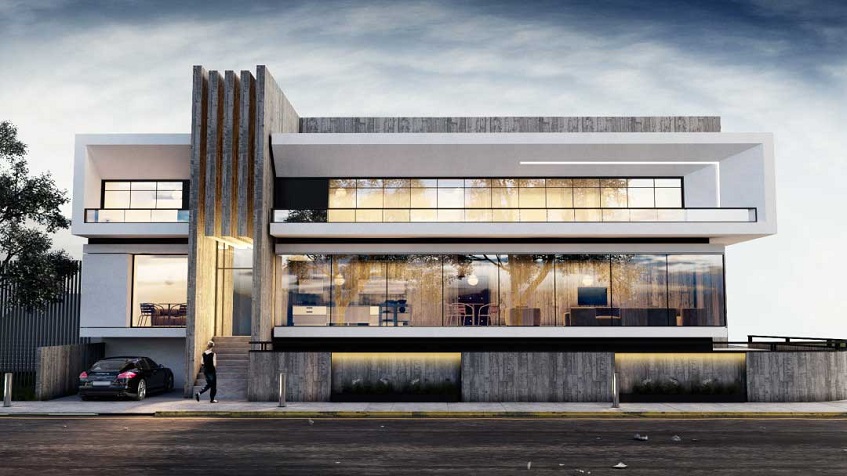In the field of architecture, realising a concept requires a careful balance of creativity and accuracy. In addition to capturing their clients’ visions, architects and designers work to create places that respect structural limitations and practical considerations.
3D architecture visualisation has become a game-changing tool in this effort, linking the conceptual and physical worlds. This article will examine the practice of 3D architecture rendering, discuss the advantages it offers, and explain how it may assist you in turning your ideas into reality.
What Is 3D Architectural Rendering?

But first, let’s define this technique before we go into the intricacies of what it entails. In essence, it is the process of using specialist software to produce three-dimensional pictures or animations of architectural projects. Because of how lifelike these representations are, stakeholders, clients, and architects can have the ability to see a project in its entirety before a single brick is set.
What Sets It Apart from Other Architectural Planning Techniques
The level of craftsmanship involved is what makes it superior to other visualisation techniques. Companies that offer 3D architectural rendering as part of their plans employ highly skilled professionals with knowledge that goes beyond technical proficiency.
Architects that know how to use 3D rendering also have an impressive understanding of design concepts, lighting, materials, and human perception go beyond technical proficiency. A proficient 3D artist can turn a simple design into an emotional and enthralling portrayal. Here are some of the biggest benefits this process offers.
An Accurate Visual Depiction of a Future Building
This process allows for architectural visualisations that are clear and realistic. Even for individuals with experience in architectural design, traditional 2D drawings can be difficult to understand. Clients can get a better grasp of the idea and specifics of a project thanks to 3D renderings.
Making Changes Is Easier
Clients frequently ask for modifications or revisions in the early phases of a project. Design iterations may be done quickly and effectively with 3D visualisation. Digital adjustments can be done in an instant, saving time and resources by avoiding the need to start from scratch.
Getting Clients Involved in the Process

It’s critical for architectural firms to keep clients interested and enthusiastic about a project. By giving clients a visual tour of their future space, 3D architecture rendering improves client engagement. It develops a sense of ownership among clients and makes them feel more a part of the project.
Improved Presentation and Marketing Potential
Stunning 3D images can be your biggest tool when marketing your architecture services. High-quality renderings can be used to showcase your portfolio and draw in potential clients in presentations, brochures, websites, and social media.
A Great Tool for Decision-Making
3D representations provide architects and designers with the ability to make educated judgments regarding the architectural components, materials, and lighting of a building. Because of this, design decisions are improved, which eventually leads to more successful projects.
Types of 3D Rendering Services

The production of three-dimensional architectural visualisations is something that calls for the assistance of experts. There are many architectural firms in Australia that provide 3D rendering services to help clients at various stages of the construction process.
- Renderings of the exterior of a building illustrate the exterior design of the structure, including the architectural features, landscaping, and surroundings of the building.
- Renderings of the interior – These offer a view into the inside spaces of a building, assisting clients in visualizing the arrangement of the furnishings and the atmosphere within the building.
- Virtual Tours in 360 Degrees – These interactive experiences provide customers a thorough comprehension of the design by allowing them to examine the project from every conceivable perspective.
- Animation and Walkthroughs – Animated renderings provide clients with a dynamic and fascinating perspective of the property by taking them on a virtual tour of the location in question.
- The cutting-edge technologies of augmented reality (AR) and virtual reality (VR) allow customers to experience a project in real time, giving them the impression that they are physically present within the design.
Finding the Best Provider for Your Project
While choosing a provider, take the following into consideration:
- Examine their portfolio to get a sense of the kind of work they produce and the aesthetic they favour. Search for service providers who have previously worked on projects similar to the one you are working on now (residential, commercial, industrial, etc.).
- Software Competence – Verify that they have a high level of expertise in software that is typical in the business, such as 3ds Max, SketchUp, or Blender.
- Communication – Having clear and effective communication is absolutely necessary. Choose a service provider that shares your vision and is capable of working in seamless collaboration.
To Sum Up
When it comes to the field of architecture, 3D architectural rendering is not only a technology; rather, it is an art form that gives architects more power, engages clients, and brings concepts closer to becoming a reality. As you anticipate starting a construction project, you may want to think about forming a partnership with a 3D rendering service provider who has the ability to bring your visions to life with accuracy and originality.


